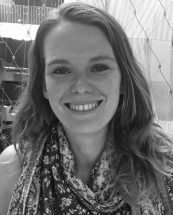A novel housing development that has helped social housing tenants become home owners could be replicated elsewhere, an evaluation of the initiative says.
Sorayia had lived in public housing for 21 years before she moved to the Barnett Model Development, a 34-unit apartment block in North Melbourne.
“For the first time we feel safe and happy knowing this is our own space,” she says.
“I hope more people get the same opportunity. We feel very lucky.”
The model involves a “deferred second mortgage” where the residents, most of whom had been long-term social housing tenants, pay a minimum $25,000 deposit and source a loan to cover the development cost of an apartment, or 63 per cent of market value.
The remainder is covered by an interest-free loan that reduces over time and is only payable when the apartment is sold.
The Barnett Model was developed by a Melbourne-based developer and is managed by a foundation, which reinvests the funds in similar future developments and crisis accommodation.
An evaluation by the University of Melbourne has found that the model addresses two key barriers to home ownership: the requirement of a high deposit, and the capacity to qualify for and service a large mortgage.

Dr Karina Raynor, a researcher at the Faculity of Architecture, Building and Planning and lead author of the evaluation, said the development was scalable and provided a proactive solution for a cohort of people in need of affordable housing.
Her report, which also includes an examination of current housing policy and a cost-benefit analysis of secure housing, notes that Australia has effectively halved its proportion of social housing since the mid-1960s.
Only ‘the most vulnerable’
Governments typically have responded to the mounting demand for social housing by progressively tightening eligibility requirements, she says.
“Social housing used to be 8 per cent of our housing market, but now it’s only three to four per cent, and it’s now aimed at people who are absolutely the most vulnerable,” Dr Raynor told Government News.
“Something like 70 per cent of people in social housing have a disability, there are high levels of mental illness and lots of other vulnerabilities layered on top of that,” she said.
Victoria alone faces a shortage of 164,000 units that are available to low-income households, according to the evaluation.
The scarcity of housing accessible to low-income households has also resulted in a “lack of transitions” out of social housing, Dr Raynor says. In 2016, 42 per cent of public housing tenants had lived in public housing for more than a decade.
Her evaluation included interviews with the residents at the Melbourne development and “reflected highly positives experiences and outcomes for the participants.”
Like Sorayia, many of the residents reported significant improvements in their feelings of safety and security.
“The quite confronting thing for me was the level of fear that came out of a lot of those interviews,” Dr Raynor said of the participants’ experiences living in social housing.
“The negative impacts of being in a fear-inducing housing environment came through quite strongly.”
Lack of development supports
Her report notes that there are “currently no consistent mechanisms designed to support developers or not-for-profit organisations to develop affordable homeownership options for social housing tenants or low income households.”
Dr Raynor concludes the new model is “scalable and appropriate” for a subset of social housing tenants who are likely to benefit from the opportunity to transition into home ownership. She says:
“This is one solution among many. It’s aimed at a certain group of people who are more financially sustainable than the vast majority of the social housing population.”
Access to land, capital and reinvested funds are among the government settings needed to support the further rollout of the model, the evaluation report says.
More broadly, Dr Raynor says greater government funding for social housing is urgently needed.
“The amount of money going into the system is not sufficient to maintain or increase the amount of social house we have… We need a consistent stream of funding and subsidy or we’re not going to be able to keep up with the population growth. The issue with social housing is you need subsidy or it doesn’t stack up financially,” she says.
The evaluation of the Barnett Model, which was supported by Melbourne City Mission, Resilient Melbourne and the City of Melbourne, is available to read here.
Comment below to have your say on this story.
If you have a news story or tip-off, get in touch at editorial@governmentnews.com.au.
Sign up to the Government News newsletter.




It’s important to get these innovative housing models out there to support the growing number of low-income households not being able to attain home ownership. Governments now needs to look at the land assets to gift/sell/lease to these kinds of affordable housing models. I was delighted to see the balance of affordable dwellings to market dwellings tipped in the affordable housing side. I just hope this “deferred second mortgage” is everything it says it is…